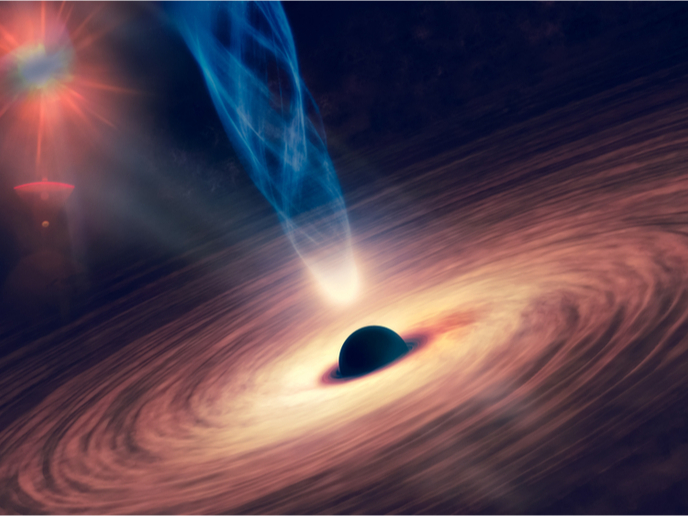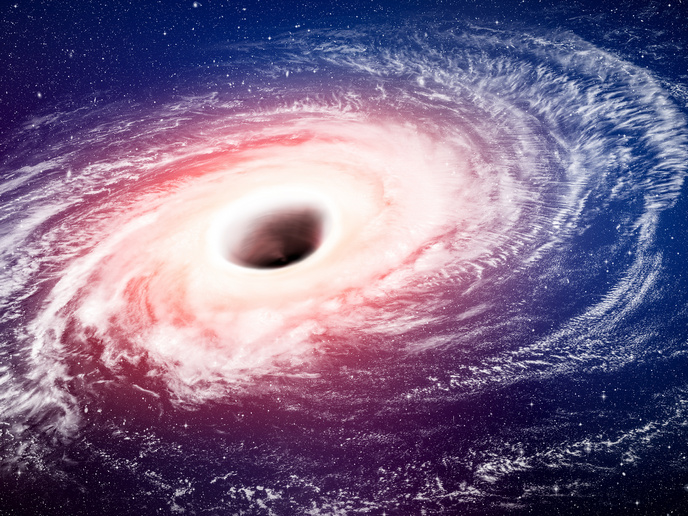Research reveals clues on the cosmic aura around a binary black hole
Black holes are one of the biggest mysteries of the Universe, but are not impossible to detect. They come in various forms: from black holes in binary systems that are essentially dead relics of massive stars about 10 times greater than the Sun to supermassive ones residing at galaxy centres that are a million to a billion times larger than our star. The gas orbiting a black hole system is a reservoir that slowly accretes over time and fuels it. This gravitational pull leads to the formation of an accretion disc. “Despite being triggered by the same accretion mechanism, black-hole binary systems display complex phenomenology that is largely determined by the manifestation of different accretion states. These states could greatly vary in their luminosity and spectral characteristics and could possibly be linked to the launch of ionised matter outflows – relativistic jets and winds,” explains Barbara De Marco, coordinator of BHmapping, a project funded by the Marie Skłodowska-Curie Actions programme. She continues: “The origin of this accretion state diversity is unknown, but geometrical distribution differences in gas accretion are thought to play a major role.”
Enlightenment on gas flow geometry
Researchers worked on techniques to map and constrain the geometry of the hot, glowing gas spiralling inward towards the black hole and understand how its shape varies depending on the accretion state. They also investigated whether and how the distribution of matter drifting inwards is intertwined with particle jets that are spewed out of black holes and accelerated close to the speed of light. “Researchers have long speculated on how accretion discs behave. Project results enabled them to understand this behaviour to a much higher degree. They have also been curious about the mechanism that certain black holes trigger to power the formation and launch of relativistic jets,” notes De Marco. The team used innovative techniques that helped extract both spectral and temporal information of X-ray emission fluxes. “Radiation wavelengths and wave amplitude distribution over time depend on the distance from a black hole. Our approach enables us to reliably perform a tomography, sectioning regions at different distances with variable flux amplitudes over time,” explains De Marco.
Linking accretion flows and relativistic jets
The team found evidence of significant and continuous changes in the geometry of the innermost accretion flows as a function of the source’s accretion state. Using reverberation mapping, they obtained quite long response times in accretion states characterised by low luminosities. Conversely, the measured delays were shorter when changing the accretion source state (more luminous sources). Analysis also showed that the regions closer to the black hole were filled by an inhomogeneous, extremely hot plasma, which is the source of the most energetic X-ray photons emitted by the binary black hole. Researchers identified the moment the accretion disc reaches the smallest possible orbit around the binary black hole and concluded that this happens simultaneously with the launch of a relativistic jet. Using advanced spectral-temporal techniques and high-quality X-ray data, BHmapping revealed a clear link between the geometry of the accretion flow and the mechanism responsible for launching a relativistic jet. Researchers envisage that their analysis approach will be more routinely used to study accretion flows of different sized black-hole binary systems.
Keywords
BHmapping, black hole, relativistic jet, accretion state, accretion disc, geometry, accretion flow, X-ray







